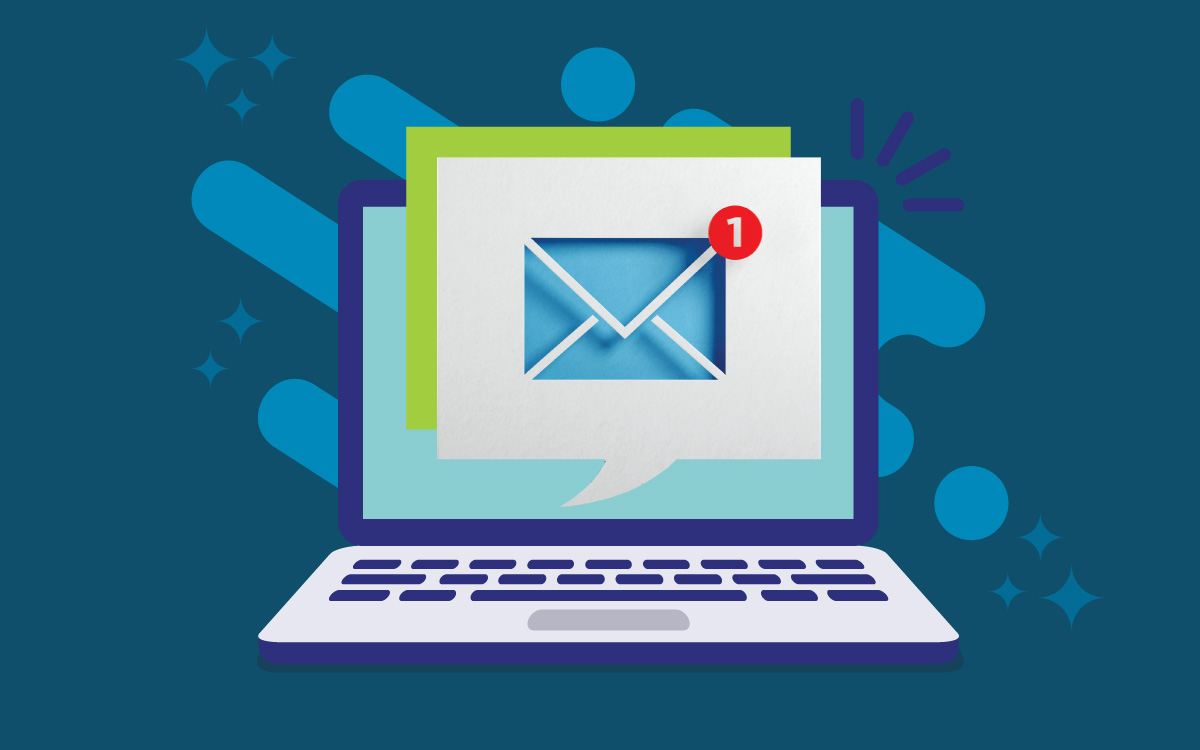
While email may seem an archaic form of marketing compared to social media influencers and newsfeed ads on TikTok, its marketing power may surprise you. As it turns out, two-thirds of customers have made a purchase as a direct result of an email marketing message. And on average, email generates $38 for every dollar spent, leading your business to a better return on investment.
Benefits of Email Marketing
There are many benefits to using email marketing as a part of your overall digital marketing strategy. Unlike social media advertising, for example, you’re able to reach prospective customers directly, in their own inbox. It’s more personalized than a Facebook ad that addresses anyone and everyone who might scroll past it. You also have more control over the content you include, how you display it, and when you initiate contact.
It’s ideal for nurturing leads – those who might be interested in your product or service but aren’t quite ready to buy yet. By communicating directly with your target audiences and sharing valuable or entertaining content with them, potential customers will begin to recognize you, appreciate you, and even trust you, moving them closer to a sale.
Email marketing can have many uses and accomplish more than one goal as well. Emails can be used to advertise specific products or services, create brand awareness or build relationships with current and prospective customers. It can also serve more logistical purposes – emailing receipts, updates about shipping or scheduling, and ways to get in touch if there’s a problem with a product.
With that, here’s a brief beginner’s guide to bringing email marketing into your strategy.
Start With a List
A successful email marketing strategy begins with building a healthy email list. More than likely, you already have some emails of people who've purchased your products or services before, other companies you’ve partnered with, and so forth. Start there, then seek to add new, potential leads to your list.
One of the most effective strategies for acquiring new emails is information capture. This allows new people to be added to your email list by clicking a CTA (call-to-action) and entering their email. This may mean subscribing to your newsletter, blog, or providing their email in exchange for something of value to them (commonly called a content offer), such as a guide, calculator, or checklist. From your overall list, you can create groups you want to target with specific messaging.

Develop a Strategy
Begin your email marketing journey with a goal in mind. What are you hoping to achieve by using email marketing? Whether you want to boost positive brand awareness, sell more products, or simply stay in touch with your customers to be top-of-mind, your goals will influence your overall strategy.
Your strategy will determine when you’ll send an email and who you’ll send it to. For example, if you wanted to build positive brand awareness, you might send a weekly email to your entire email list with fun, upbeat content about what your company is working on. If you’re looking to sell a particular product on the other hand, you might send a short-term series of emails to current customers about the product with coupon codes or other deals relating to that product. Your strategy will help you make sure you’re sending the right message to the right audience at the right time.
Craft a Compelling Email
Once you’ve defined your goals and a strategy to work toward them, you’re ready to start crafting emails. We could write an entire blog about how to craft a compelling marketing email, but we’ll give you the concise version here. Before anything else, you’ll want to choose an email marketing platform. We covered the most commonly used ones here, so that’s a good place to start. They all perform in generally the same way, so all of our tips below will apply to any platform.
Successful emails are focused, with a single main message that serves your goal. A focused email is always better than a digital version of grandma's newsletter that talks about everything under the sun. It should be clear from a glance through your email what it’s about and what the CTA is.
First, write a captivating subject line – one that people can’t refuse clicking on to open the email. It should be short, clear and relevant to the body of your email. Next, personalize your email where it makes sense. Consider adding the recipient’s first name to the email, and write your copy in a personal, relatable tone. For your email copy, keep it concise (the optimal copy length for a marketing email is around 200 words).
Include images or videos that are eye-catching and match with the content of the email. Create a single CTA with a relevant offer that is clickable and stands out from the rest of the email. Bold buttons with bright colors or images are ideal. And, perhaps above all, make sure your email is responsive to all devices, easily viewed on smartphones, tablets, laptops and desktop computers.

Analyze (And Repeat)
Use analytics to determine what content visitors are most engaged with. You can use A/B testing to see how people respond to different kinds of subject lines, photos, CTAs and more. Evaluate each email to see how you can adjust and improve on the next one. This will help you create messages that are tailored toward your readers to address their interests, allowing you to send them more content on the topic.
Consider Automation
If you’re just starting out with one email per week, adding email marketing to your workload can be manageable. But the more you segment your audiences and the more emails you send, the more complicated and time consuming the effort can become. If you find success with email marketing and want to expand it without having to manually initiate emails each time, we highly recommend using automation tools. Automation tools like Hubspot (that’s what we use) can automatically send pre-prepared emails when actions on your website trigger them. For example, when someone buys an item on your e-commerce site, an email can be automatically sent to the purchaser to say “Thanks for shopping with us.” It takes away the hassle and responsibility of remembering to send an email each time an action is taken.
In closing, email marketing can be incredibly impactful when used in a smart, meaningful way. If you need some guidance or (wo)manpower to initiate your email marketing efforts, contact us here at PRIME.
If you enjoyed this edition of PRIME Pulse, take a look at some of our other related articles:
- 4 Steps Toward a Better Content Marketing Strategy
- 5 Reasons Your Website is Never Really Done
- 10 Ways to Communicate Empathy and Authority Amidst Crisis
- 4 Reasons Your Messaging is Falling Flat
- The How-To on Facebook Marketing Campaigns



